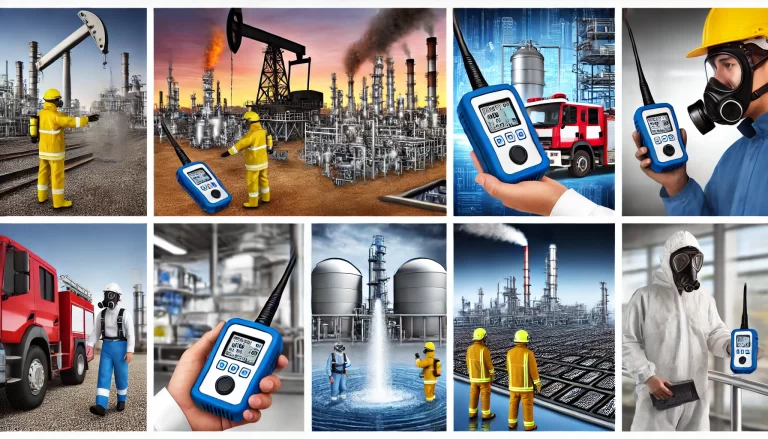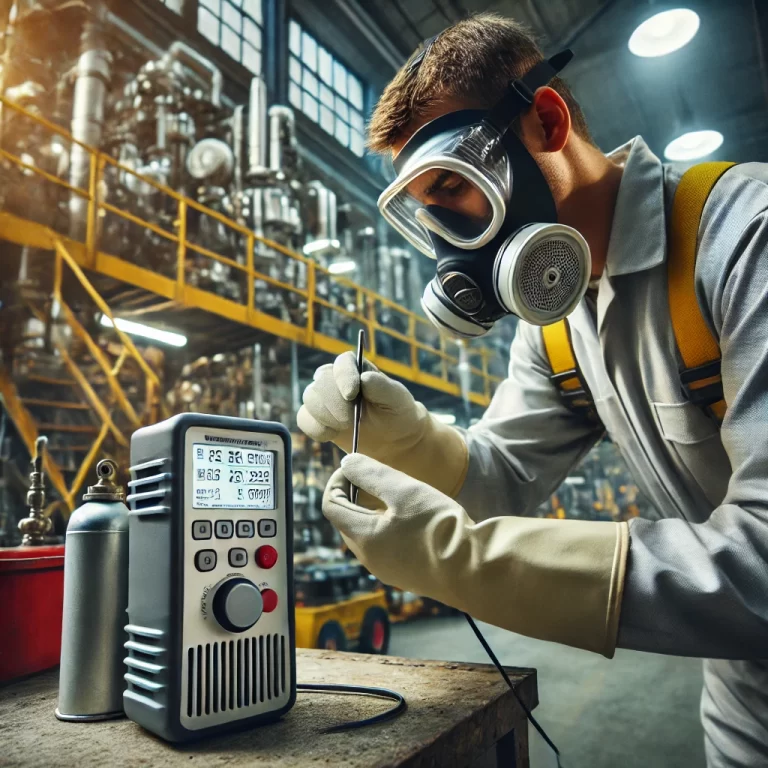In various operational scenarios involving gas detection, hazardous gases often pose significant threats to both safety and productivity. These include:
- Hydrogen sulfide (H₂S)
- Chlorine (Cl₂)
- Sulfur dioxide (SO₂)
- Hydrocarbons (e.g., benzene, toluene, xylene)
- Methane (CH₄)
- Hydrogen (H₂)
- Ammonia (NH₃)
To mitigate risks, portable gas detectors are widely used in diverse applications, from oil and gas exploration to municipal engineering and semiconductor manufacturing. This article outlines the key scenarios and factors to consider when selecting gas detection devices.

Key Scenarios and Associated Risks
1. Oil and Gas Operations
- Hazards: Flammable gases (e.g., hydrocarbons) and toxic gases (e.g., hydrogen sulfide, ammonia).
- Details: Drilling, extraction, and refining processes involve significant amounts of combustible and toxic gases. Accurate real-time monitoring is essential to prevent leaks that could trigger catastrophic incidents.
2. Wastewater Treatment
- Hazards: Flammable gases (e.g., methane) and toxic gases (e.g., hydrogen sulfide, sulfur dioxide).
- Details: Wastewater naturally releases methane and hydrogen sulfide, especially during anaerobic decomposition. Regular monitoring ensures worker safety and prevents explosions.
3. Municipal Infrastructure (Tunnels, Pipelines, Power Plants)
- Hazards: Flammable gases (e.g., natural gas, hydrogen) and toxic gases (e.g., carbon monoxide, nitrogen dioxide).
- Details: The confined nature of these environments increases the risk of gas accumulation, requiring robust gas detectors to prevent suffocation or poisoning.
4. Industrial Production (Including Semiconductors)
- Hazards: Flammable gases (e.g., hydrogen) and highly toxic gases (e.g., phosphine, ammonia).
- Details: The use of hazardous chemicals and gases in industrial processes necessitates comprehensive gas monitoring to ensure production stability and worker safety.
5. Firefighting and Emergency Response
- Hazards: Flammable gases (e.g., methane) and toxic gases (e.g., hydrogen sulfide, carbon monoxide).
- Details: Firefighters and rescuers rely on portable gas detectors to quickly assess hazardous gas concentrations during operations in fire scenes or confined spaces.
Six Key Considerations for Selecting Gas Detectors
Gas Types and Concentrations
- Choose detectors based on the gases likely to be encountered in the work environment. Multi-gas detectors are ideal for complex environments where multiple hazards are present.
Measurement Range
- Ensure the detector’s measurement range significantly exceeds the maximum expected gas concentrations to provide accurate readings even in extreme scenarios.
Accuracy and Response Time
- Opt for devices with high sensitivity and rapid response times to detect even trace amounts of hazardous gases and issue timely alerts.
Durability and Environmental Suitability
- Devices must withstand harsh conditions, including extreme temperatures, dust, moisture, and potential explosive environments. Look for certifications such as ATEX or UL for explosion-proof capabilities.
Data Connectivity and Logging
- Advanced gas detectors offer data logging and real-time transmission features, enabling centralized monitoring and proactive safety management.
Battery Life and Usability
- Long battery life and simple, intuitive operation ensure the detector is always ready to meet demands, minimizing downtime and operational risks.

A Practical Example: Firefighting Applications
In a fire emergency, toxic gases such as carbon monoxide and hydrogen sulfide are often present alongside flammable gases like methane. A firefighter using a portable multi-gas detector can quickly:
- Assess gas concentrations.
- Identify safe entry routes.
- Receive real-time alarms for immediate evacuation if gas levels exceed safety thresholds.
This ensures rapid and informed decision-making, safeguarding lives in high-stakes environments.
Visualizing the Selection Process
Below is an example workflow for selecting gas detectors tailored to specific operational needs:
- Identify the Environment (e.g., wastewater treatment plant).
- List Potential Gas Hazards (e.g., methane, hydrogen sulfide).
- Define Device Requirements (e.g., multi-gas capability, explosion-proof).
- Test and Validate (ensure accuracy and reliability in real conditions).
Incorporating such a systematic approach ensures the most effective and reliable solutions.

Conclusion
The selection of appropriate gas detectors is a cornerstone of safety in industries ranging from oil and gas to municipal engineering and emergency response. By understanding operational scenarios and leveraging tailored devices, businesses can build robust safety systems that protect both personnel and assets.
Portable gas detectors are no longer just tools; they are indispensable partners in fostering safe, efficient, and sustainable work environments.
